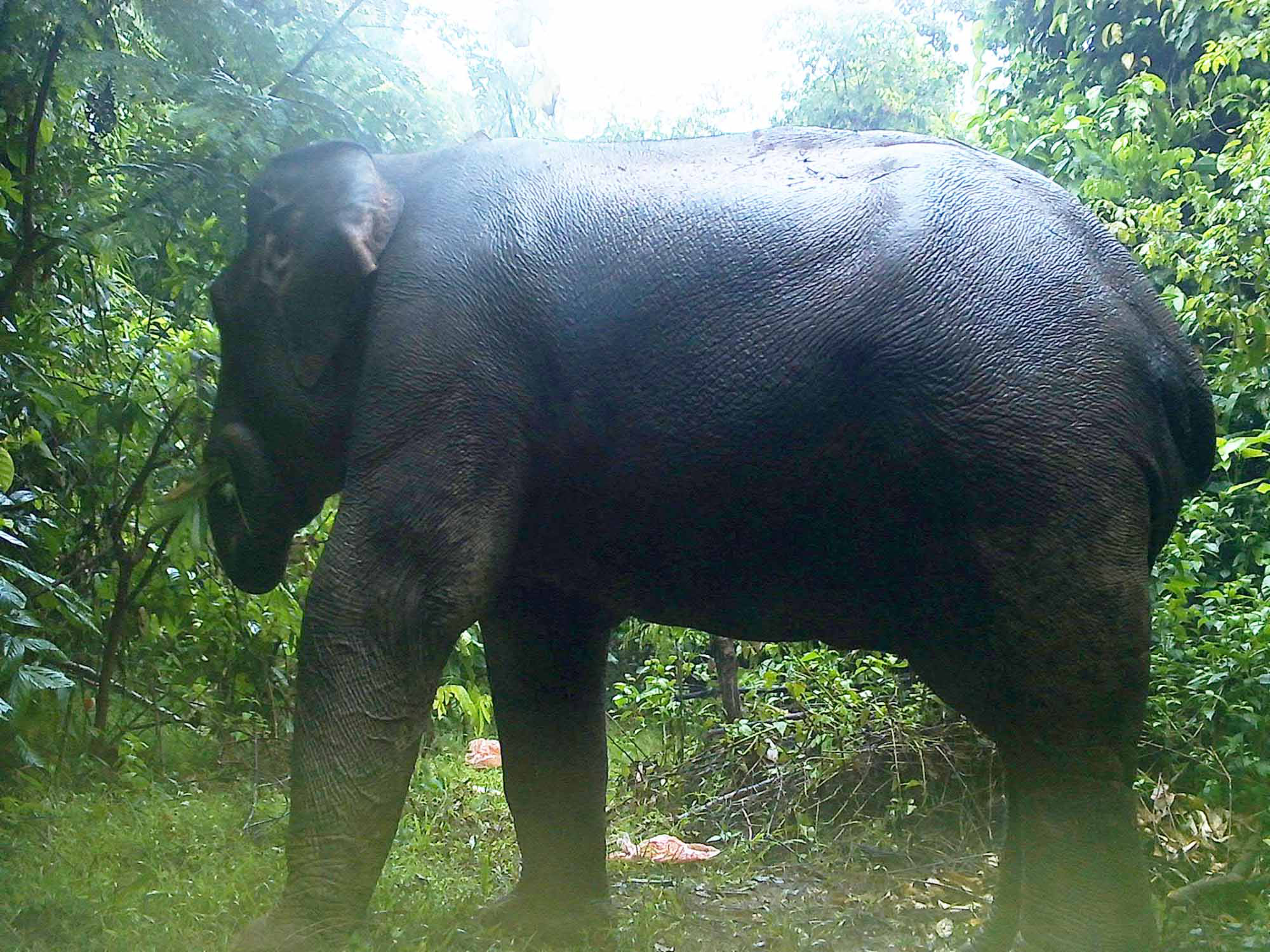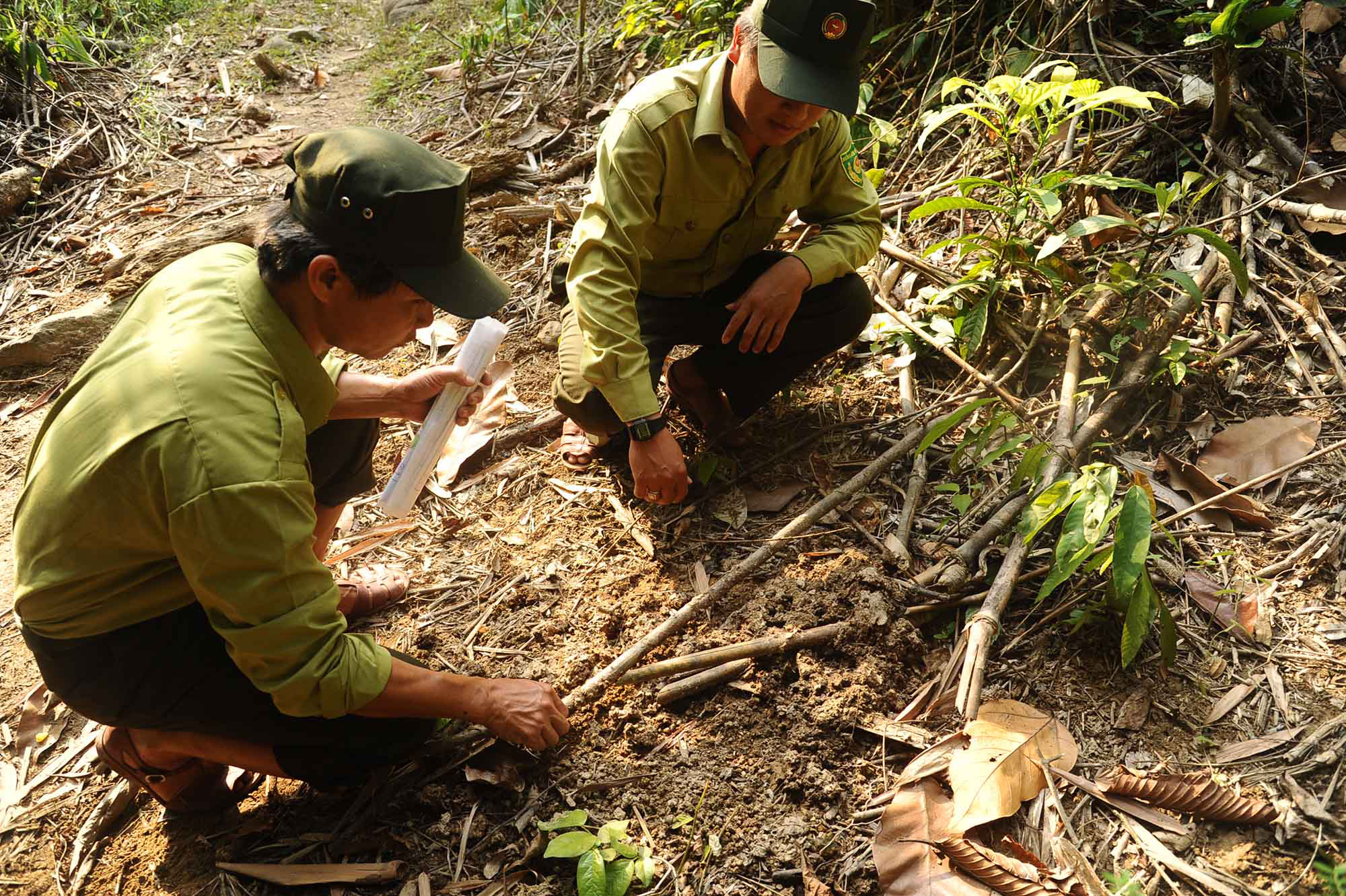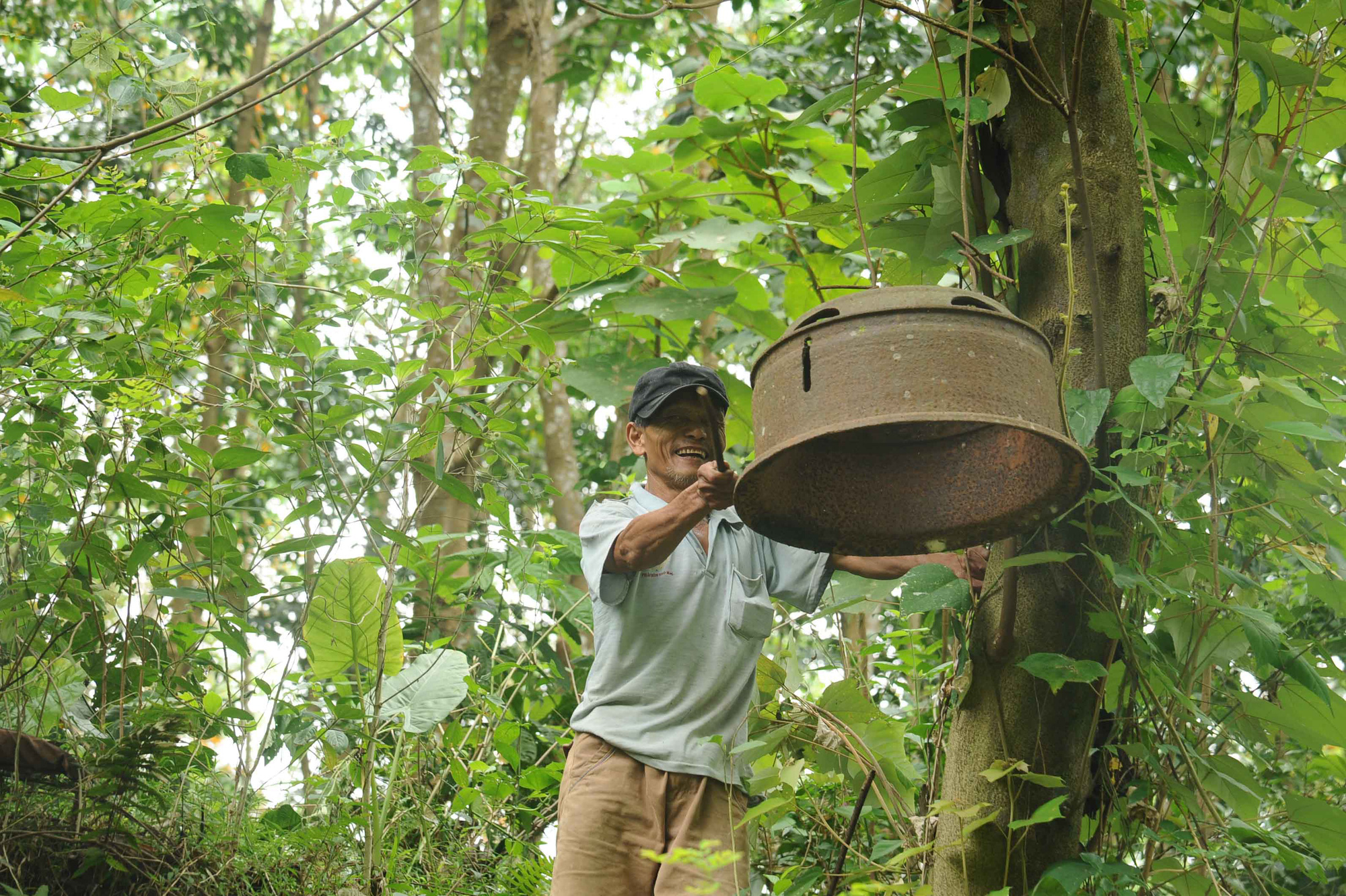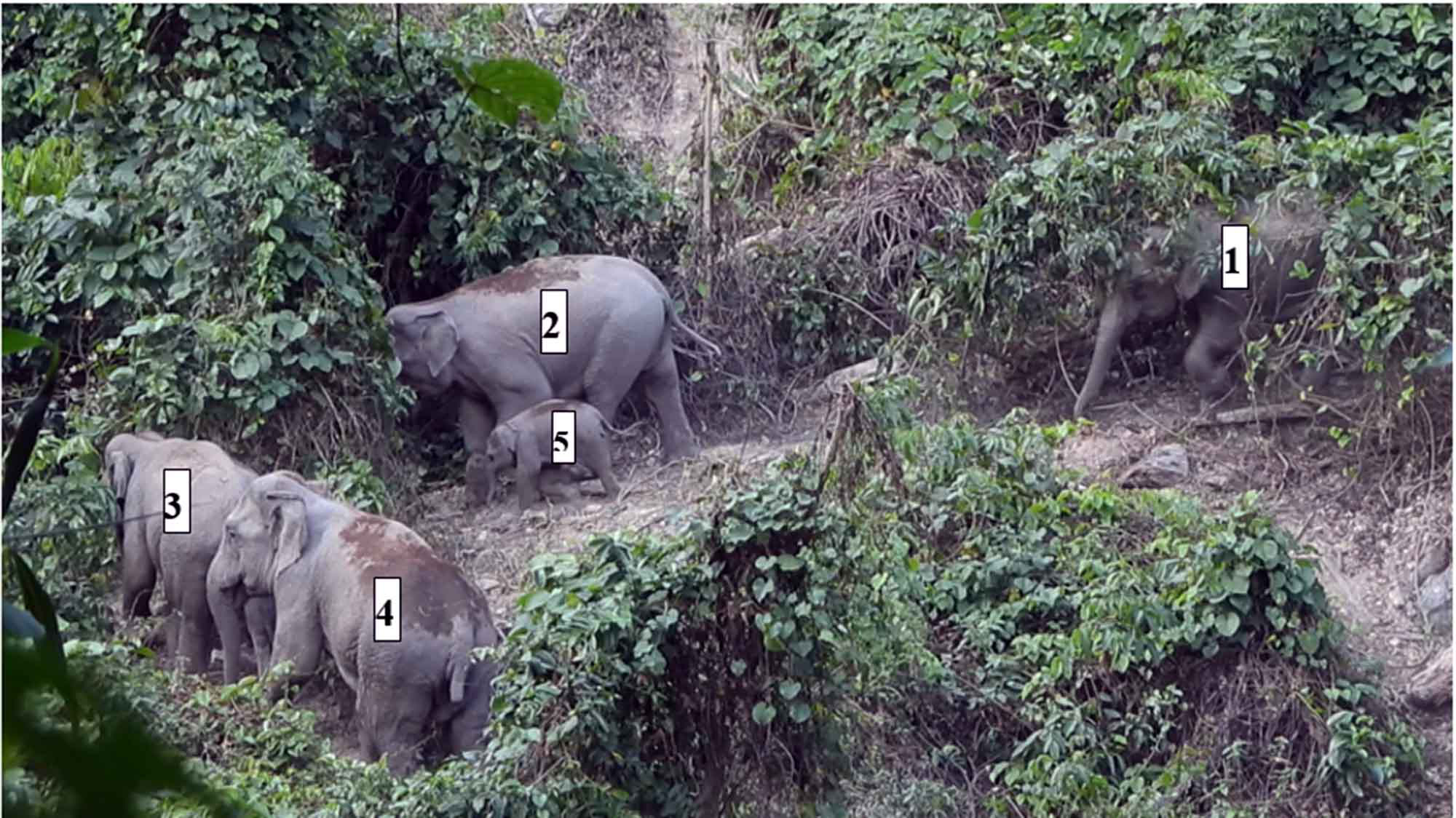A handful of endangered wild elephants have stayed hale and hearty roaming freely in a sanctuary in the central Vietnamese province of Quang Nam.
Over the past several years, the 19,000-hectare Quang Nam Elephant Sanctuary, snugly nestled in the province's Nong Son District, has been a sweet home to endangered wild elephants.
The number of elephants across Vietnam, including in the Central Highlands — an elephant tourism hub — has dwindled to a worrying level in recent years.
Dozens are still kept in captivity, usually used for elephant rides — backbreaking work that has rendered most infertile today — while their wild counterparts do not fare any better and have shown little promise of boosting their numbers.
The country currently boasts around 100 endangered elephants living in the wild.
A herd of eight Asian elephants — an endangered species listed by the International Union for Conservation of Nature — is the Quang Nam sanctuary’s recent pride.
Tuoi Tre (Youth) newspaper reporters accompanied park wardens on a recent visit to the dense forests enshrouding Cam La Village in Que Lam Commune to witness their conservation works.
Tracking wild elephants
Six wardens turned on their navigation devices and headed to the forest in search of the elusive elephants.
“We split up and wade through vast forested expanses for any signs of intrusion for poaching and timber collection, and to keep track of the mammals as well,” Nguyen Cao Cuong, one of the wardens, said, adding experts and villagers were overwhelmed by the latest addition of a baby elephant to the herd, raising the total to eight.
With the colony considered a prized gift from Mother Nature, a concerted effort has been made to ensure wellbeing for the world’s largest land mammals.
The team finally made it to Vung Thung, one of the herd’s favorite spots for food and baths. The area was riddled with their dung, footprints, and impressions left on tree trunks.
“These telltale signs show that the animals were here for food. The area brims with rattan and Asian bamboos, their favorite staples,” Do Dang Vu, another warden on the team, revealed.
The men, who spend up to 15 days each month in the forest, know the area like the back of their hands.
“The forest is huge, so we don’t stay put but go on patrols across the sub-zones in a clockwise direction to make sure no one can hurt them,” Cuong added.
The hours-long forest crossing seemed fruitless, with the elusive animals nowhere to be spotted.
Sightings are rare even to the wardens as the elephants venture into the glade expanses only when they run out of food, Vu explained.
“However, it’s best to avoid encounters with the animals. We sometimes just walk on without seeing them, assured that they are safe in the forest after hearing them trumpet in the distance,” Vu added.
“It may take days to track the animals down. Now that they are nursing a baby, they may turn aggressive, so it’s better not to intrude on their territory,” Cuong noted, adding a group of experts who recently spent one month studying the sanctuary’s biodiversity couldn't spot the herd until after several days into their stay.
 |
| An elephant is captured by a camera trap set up in the Quang Nam Elephant Sanctuary, located in the namesake province in central Vietnam, in this supplied photo. |
Upbeat note
The sanctuary, founded in late 2017 with nearly 30 wardens and staff members, has been working hard on projects in forest ranging and preservation of biodiversity, with keeping the elephants safe a top priority, according to Mai Van Duong, the sanctuary’s vice-director.
“The animals have sustained minimal human impact since the establishment of the sanctuary. Their habitat and stability of food source are guaranteed,” he said.
His facility has recently teamed up with conservation experts from the Green Truong Son project, developed by the United States Agency for International Development (USAID), for research on its biological richness.
The month-long research yielded records and photos of eight elephants, including one adult male, one semi-mature male elephant, three mature female elephants, two semi-mature female elephants, and a one-year-old calf.
The calf is a positive sign to the sanctuary’s long-existing colony and a reward to the staff’s relentless efforts, he said, adding they are all set on protecting the jeopardized animals.
Fences of thorny lebbek trees have been erected along the 2.4-kilometer forest brim to keep the herd away from humans and their crops, Duong added.
 |
| Two wardens track down a herd of wild elephants in the Quang Nam Elephant Sanctuary, located in the namesake province in central Vietnam. Photo: Le Trung / Tuoi Tre |
Joining hands
Local residents have also played a part in the conservation efforts.
Over the past dozen years, Cam La villagers, who are no stranger to the wild animals, have always born in mind the importance of avoiding human-elephant conflicts and potential harm to them.
No intruders can sneak into the forest without villagers knowing and any intrusion will be deterred following the locals' prompt tips-off to local authorities.
Among them is 67-year-old Nguyen Van Binh, who cannot remember how many times he has bumped into the elephants over the past 40 years.
He recalled feeling devastated at his ravaged crops and the trail of destruction left behind following the elephants’ ‘visits’ to the village in search of bananas and corn several years ago.
The jumbos’ ‘tantrums’ and havoc have ceased since the establishment of the sanctuary years ago, Binh noted.
Binh is tasked with snapping shots of the animals by the sanctuary management and was given a camera for this purpose.
“I led the experts into the forest for survey one month ago,” he said proudly, adding he also keeps a diary with meticulous records of time and locations of his elephant sightings.
 |
| A local resident makes noises to drive elephants away from their crops in the vicinity of the Quang Nam Elephant Sanctuary, located in the namesake province in central Vietnam. Photo: Le Trung / Tuoi Tre |
According to Luong Quang Minh, a locally-elected head of Phuoc Hoi village, he and others have worked to raise conservation awareness among locals, particularly on avoiding conflicts with the elephants.
“Despite their enormous size, the elephants are as meek as children. I once saw them relishing their baths in a spring. They do not mean us any harm and usually retreat into the forest upon spotting us,” he shared.
Le Tri Thanh, chair of Quang Nam Province People’s Committee, said the province is working with conservationists to relocate another herd of elephants from Bac Tra My District safely to the sanctuary, and seeking funding from the central government to further develop the establishment.
Like us on Facebook or follow us on Twitter to get the latest news about Vietnam!




















































